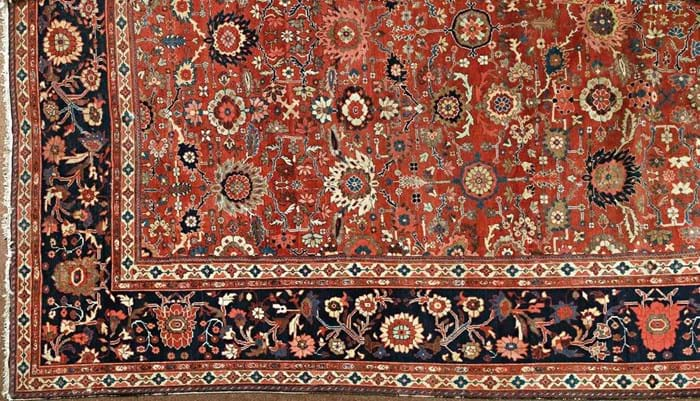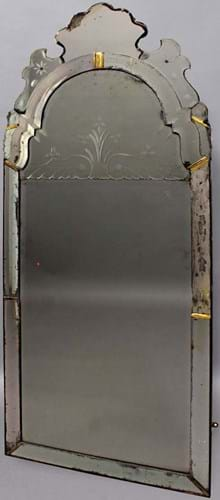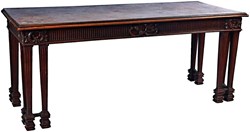Comprising settee and six chairs, it was made c.1740 for Creech Grange near Wareham, the Dorset seat of the Bond family from the late 17th century until the estate was sold in 1975. The chairs were photographed in situ in the library by Country Life in 1931.
The house was remodelled in 1739-40 by Francis Cartwright, an architect from Blandford who worked in tandem with local furnishing firm John and William Bastard. A surviving note in Nathaniel Bond’s family account book for September 1741 reads: ‘pd. Bush for carriage of chairs from Blandford 5s.’ and for May 1742 is an entry recording ‘paid Mr Bastard’s bill £14.9.0’.
The chairs and sofa, of good provincial manufacture, were estimated together at £15,000-20,000 and found a buyer at £16,000.
Bidding buzz
Several lots from Creech Grange created a buzz. As well as a £125,000 Netherlandish picture, a Feraghan Mahal carpet from west Iran, c.1890, measuring (7.3 x 4.1m), appealed for its good colour and large size and was bought for £18,000.
Two large 18th century pier mirrors made in the Venetian style came for sale from the current Lord Bicester.
These were part of the furnishings of Tusmore Park in Oxfordshire, the neoclassical mansion designed by Robert Mylne that was demolished by a predecessor in 1961. A large house in the classical tradition by William Whitfield now stands on the site.
The mirrors, probably made in Murano, retained most of their original mercury glass mirror plates and stood around 6ft 8in (1.9m) high. Estimated at £2000-3000 each, one took £17,000.
The near pair, minus the upper central plate with further floral cut decoration, sold at £15,000.
Lawrences director Anthony Kilroy, who oversaw the sale, said that “the local connections, matched with fine quality and condition, caught the eyes of discerning buyers. We were delighted to be able to refer to good historical background and scholarly research in order to achieve these results.”


















